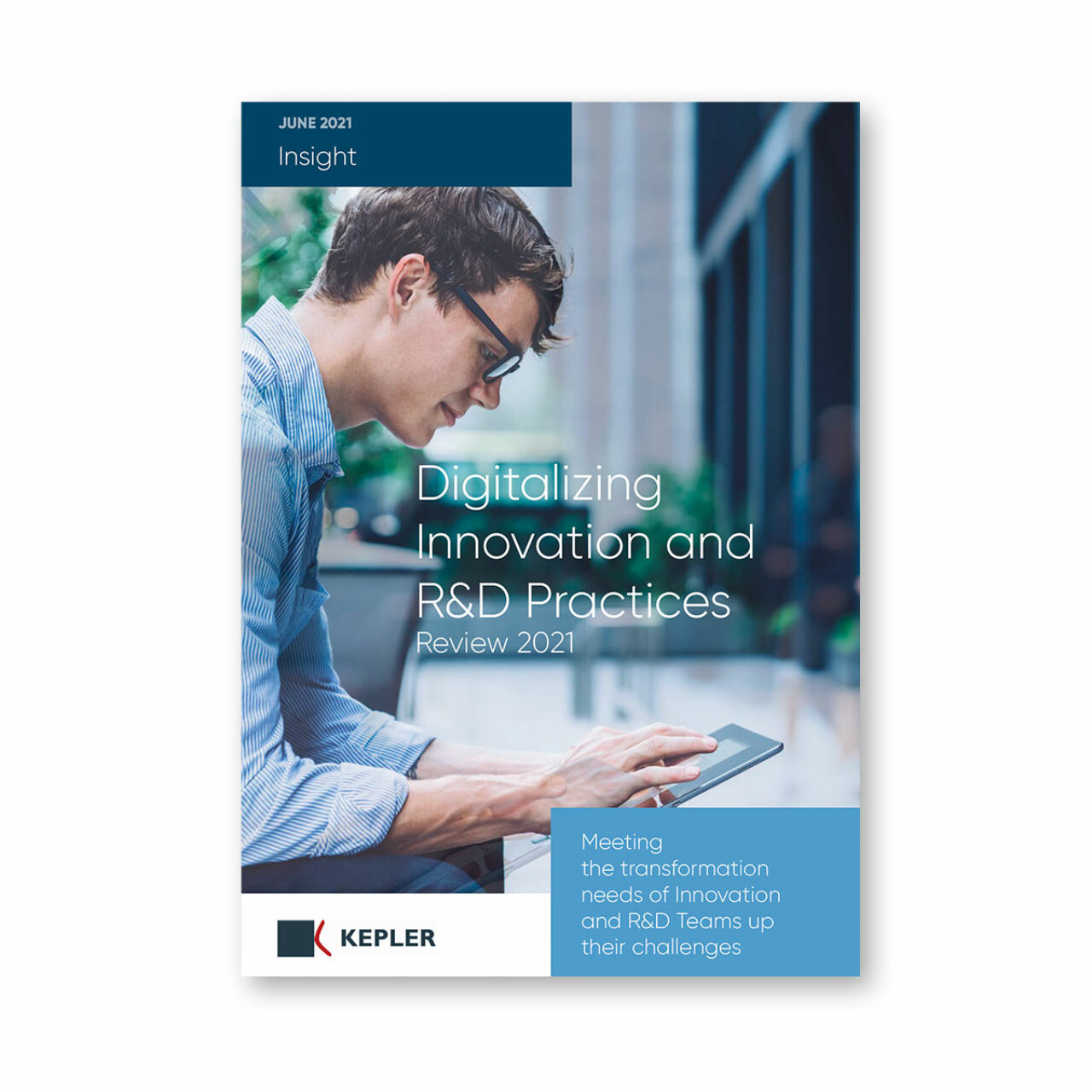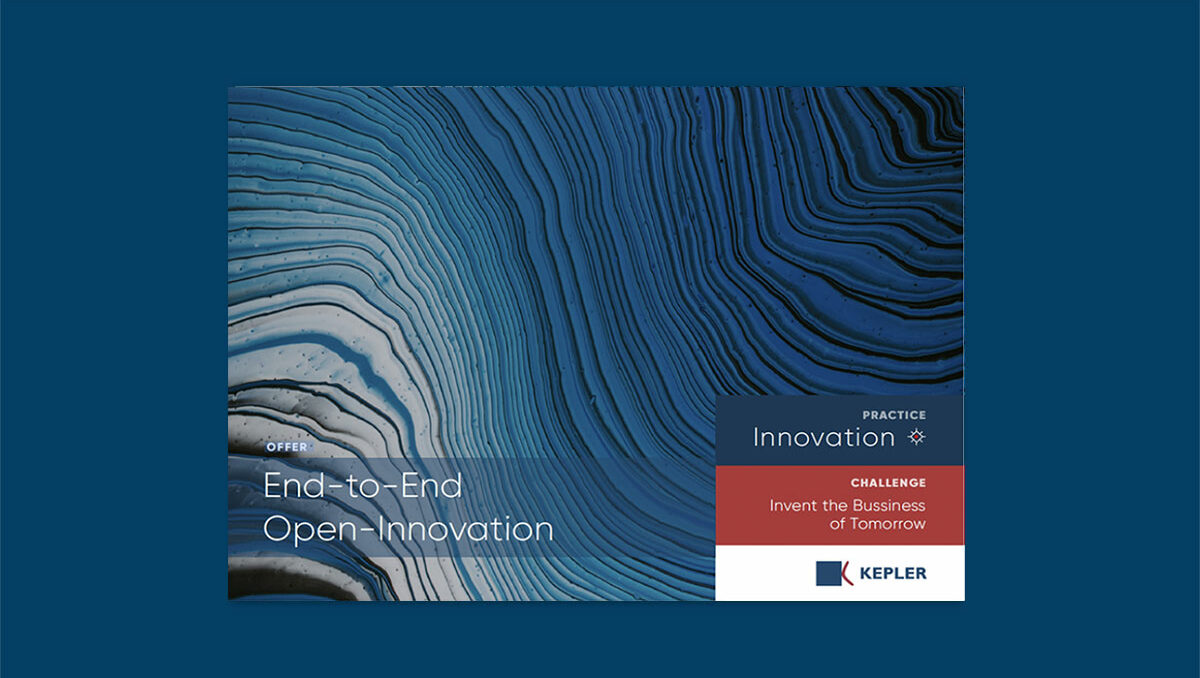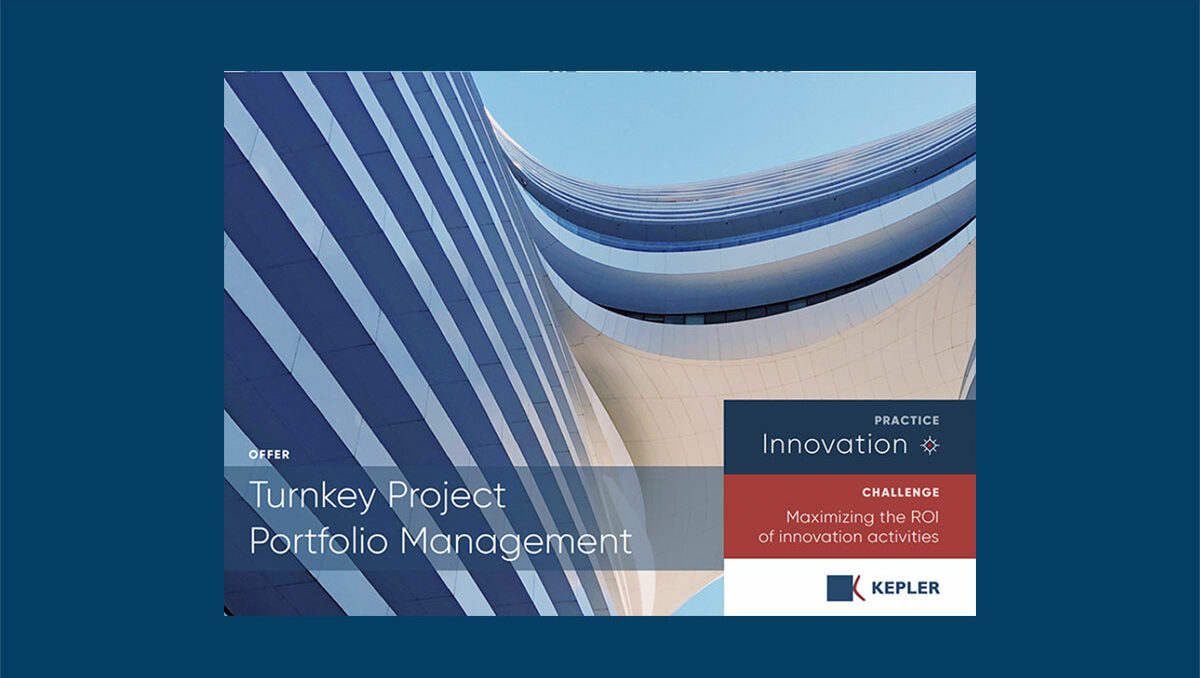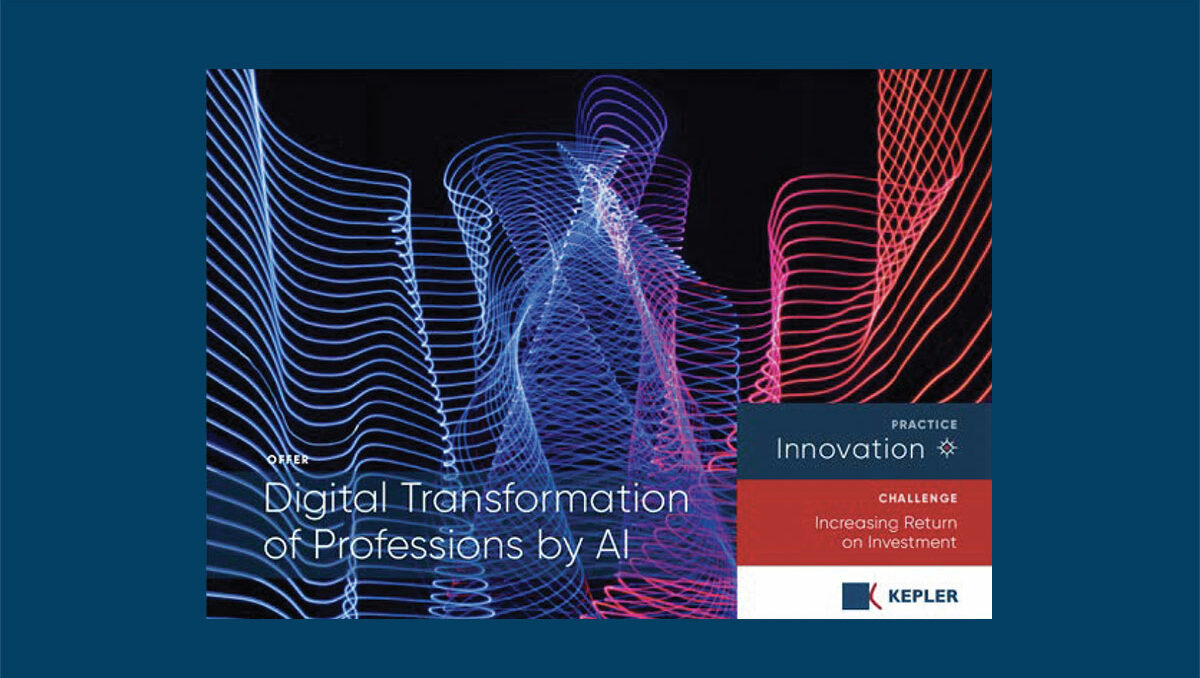
Digitalizing Innovation and R&D Practices
What is Innovation Digitalization?
The process of innovation digitalization involves the use of modern digital tools to drive the innovation and R&D process more efficiently for any organization.
Identifying the “Due-Need” of Organisations
Over the course of the missions we have carried out for our clients, in various environments, we have noticed that Innovation and R&D teams are today facing four major challenges:
- Inventing the Business of Tomorrow
- Increasing the ROI of R&I
- Accelerating Time-To-Market
- Engaging the R&D Community
- Innovating Sustainably
For each of these challenges, digitization offers possible solutions, of which we offer a brief summary below.
In a context where companies are forced to innovate ever faster and more efficiently, digital tools are proving to be real levers for acceleration and global optimization if they are calibrated and well deployed.
The KEPLER Answer to the Challenges of Innovation and R&D Teams, four main fields of action
When it comes to «Inventing the business of tomorrow» and «Engaging the R&D community in future projects», one question keeps coming up:
How to boost the sources of internal or external innovation and promote the emergence of meaningful concepts offering added value?
Regarding the «Optimizing the return on investment of activities» and «Reducing the Time-To-Market for products/services» challenges, the question of efficiency is crucial. It can be considered at two levels:
- overall management of R&D and innovation projects
- operational product development
Digitization of Technology Watch Information
In the case of technology watch, digitization enables to better understand market trends and tomorrow’s technological bets. Technological monitoring tools which are: StartUs*, CB Insights*, Expernova*, Clarivate Analytics* provide access to large databases and analyses: science literature, patents, clinical trials, experts, start-ups, universities, Fablab. These bases are established on a global scale and serve to direct R&D activities towards the most promising technologies. Whether for competitive watch or technology targeted watch, these tools are now essential for detecting growth opportunities and identifying relevant partnerships within the framework of Open Innovation approaches
The Digitization of Means of Collaboration and Ideas Generation
Business organizations are increasingly complex and dense in expertise. Sources of innovation exist but lack of visibility. Promoting the activation of internal innovation sources, collaborative and idea generation platforms such as Qmarket* or Planbox* enable to capitalize on the expertise and creativity of resources. These solutions provide a trusted environment favoring innovation by offering a simple and transparent ideation process. Similar to a social network, all the collaborators can share their ideas in a spontaneous way or through challenges, and can also vote and comment on the ideas they deem the most promising. Employees thus become drivers in the ideation process, which is a key factor of commitment for future projects. While some platforms are dedicated to the facilitation of internal communities within the company, others offer to build a real innovation ecosystem with external partners also favoring the activation of external innovation sources. These are all the most useful in the context of a start-up / large group or supplier / customer relationship.
Digitization of Project Portfolios
The “PPM” (for Project Portfolio Management) tools such as One2Team, Planview or Planisware address the prioritization of innovation projects and the optimization of their development. They provide an overview in real time of all projects and their status, which facilitates decisionmaking. The part specific to the management of each project enables to better manage the schedules (often slippery in the context of R&D projects), to optimize resources and to better control development costs. To go further, there are also skills mapping tools such as Elamp, Whoz, Wiserskills enabling to optimize the use of internal expertise across the company.
-> Consult an Innovation Project Portfolio Management Business Case
Digitization of Data and Business Lines Design Rules
In a more operational perspective , the digitization of data and design rules enables to accelerate and maximize the ROI of product development. Indeed, the management and capitalization of the masses of data related to the company’s internal knowledge are crucial, but as complex as the knowledge and expertise acquired are varied. The digitization of these design rules allows an alignment of structuring design decisions from the start of the project (avoiding thus to recreate the wheel!). Geeglee is a tool in the field that relies on the business lines know-how to offer new scenarios by analyzing a multitude of alternatives and evaluating the risk/benefit ratio for each one. In addition, depending on the level of contribution of algorithms in the decision-making process, AI can strengthen data analysis, the prediction of results, and even the recommendation of design solutions. For example, during the modeling phase, the introduction of performance prediction tools and virtual tests such as Monolith AI or Citrine Informatics… optimizes development times.
Ingredients of a Successful Digitization
Beyond the “showcase” concepts, digitization brings changes in the corporate culture when it breaks into the organization. Commonly symbolized by the 4S model, this transformation is implemented through four levers: Strategy, Structure (organization, governance), System (process, tools) and Social.
The digitization of Innovation and R&D must therefore blend in a strategic vision or a global ambitions program for the company. Whether it is securing the business of tomorrow through innovation or developing sustainable products and services, everyone will be impacted by this digitization phenomenon.
The organization must adapt itself by clarifying the new roles. This can be done by creating an entity in charge of Digital Acceleration. This Service is proving to be a major asset for steering projects, assisting operational teams and deploying good governance bodies involving IT, the Professions and Business,
sharing the essential roles and responsibilities to anchor and sustain changes in practice over time.
It is also and above all necessary to manage resistance to change by promoting skills development (training, awareness raising, etc.) of the teams, by facilitating communication between the various departments and by highlighting the first deployment successes. The implementation of tools and digital solutions such as those described above, ultimately constitutes a simple convenience. It is indeed the commitment of all employees to the digital transformation project that will be the decisive factor for success.
Expert consultants in digitization projects fully play their role of facilitator and accelerator by allowing organizations using their services to never lose sight of the essential components of a successful transformation / digitization project.Mathieu Pailler, Partner
These Concepts on Everyone’s Lips
AI or Artificial Intelligence
Used more or less wisely and haloed by the flattering term «Intelligence», this technology promises to simulate human reasoning to the point of surpassing it with its unparalleled computing power. However, between the Hollywood vision and the state of the art of this technology in today’s businesses, it is necessary to distinguish «strong AI» from «weak AI». To this day, this technology is still very dependent on human intelligence, both in the collection of usable data, and in the design of algorithms able to implement such computing power.
Blockchain
The Blockchain is a frightening technology in the country of these concepts that we need to summarize in thirty seconds. Initially associated with currencies of a new kind, the blockchain is summarized as follows: a growing list of records, called blocks, that are cryptographically linked. If that is not clear enough, blockchain is a technology offering a holistic reading of various events, a sort of super ledger, permanently accessible, and that you can associate with any type of data source as long as it can be quantified and modified between multiple parties. It can be movements of goods around the world, of bytes within a computer network, or document flows, whether they relate to the construction of complex contracts or the filing of high-level technical patents. For organizations seeking transparency and overview over a complex universe, the blockchain is a research path filled with potentials.
RPA or Robotic Process Automation
RPA is a technology that automates or process in batches repetitive and time-consuming tasks. RPA combines speed of execution and a high degree of security by eluding traditional human errors. Operational actors benefiting from this assistance can thus focus their efforts on singular tasks with greater added value, which is the main argument in favor of this technology
MDM or Master Data Management
Master Data Management is a technological discipline where business lines and information technology (“IT”) work together to ensure uniformity, accuracy, semantic consistency and real-time analysis of businesses’ official data assets. Data being considered as the new fuel or the new gold of the 21st century business lines, it is easy to understand why a good data management has became a strategic axis for most organizations. Facing the amount of information available within R&D teams (referred to as “Data Lakes”), business lines data (products or formulas) or data from patents, algorithms (and therefore Artificial Intelligence) are a strong potential lever. The new functions associated with the management of this data, such as «Data Scientists» or «Data Analysts», are a coveted keystone and therefore highly sought after.
Open Innovation ou l’innovation “libérée”
Open Innovation is not a technology, but rather a mode of innovation based on sharing and collaboration. The level of maturity of large companies in terms of open innovation in connection with young companies are constantly increasing and these collaborations have a strong impact for the vast majority of them. Open Innovation allows to innovate collectively and to create privileged relationships with start-ups.
Beyond Words, a Field Reality
If “Digitization” is an inexhaustible source of fantasies or headaches, whether one is a prospective enthusiast or not, it is still in many cases limited to relatively simple perception phenomena. En clair, This is something the KEPLER teams observe every day in the context of their missions. Clearly, for the vast majority of economic actors, digitization still rhymes with simple digitization of data and sharing of documents. Indeed, not all companies are named SpaceX, Thalès or Google and, for many of them, the action of digitization still essentially consists of centralizing important information in order to facilitate their access and improve the collaboration of the teams between them. In such cases, digital libraries and networked software (SaaS) fulfill their role perfectly, allowing instantaneous knowledge sharing and advanced access management, for works that are now called “collaborative”.




